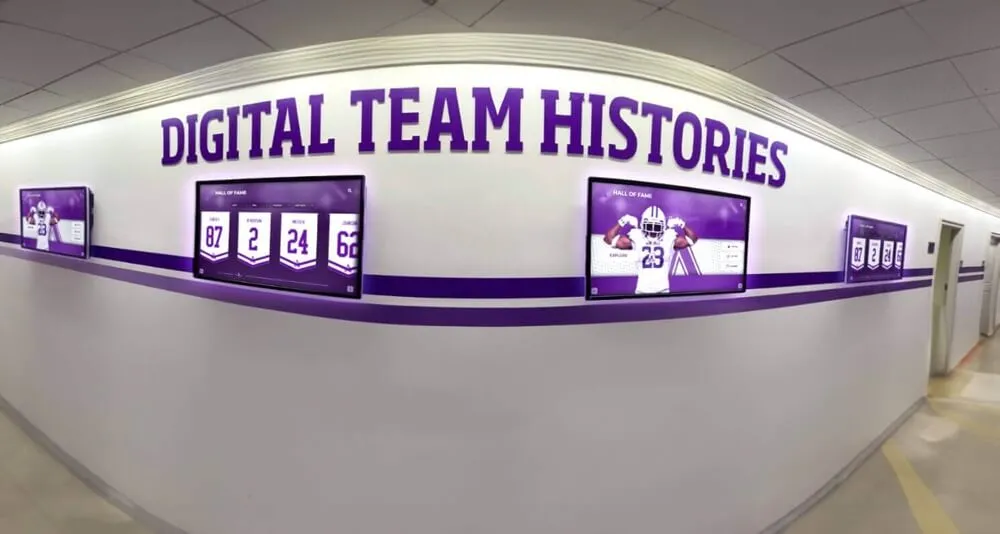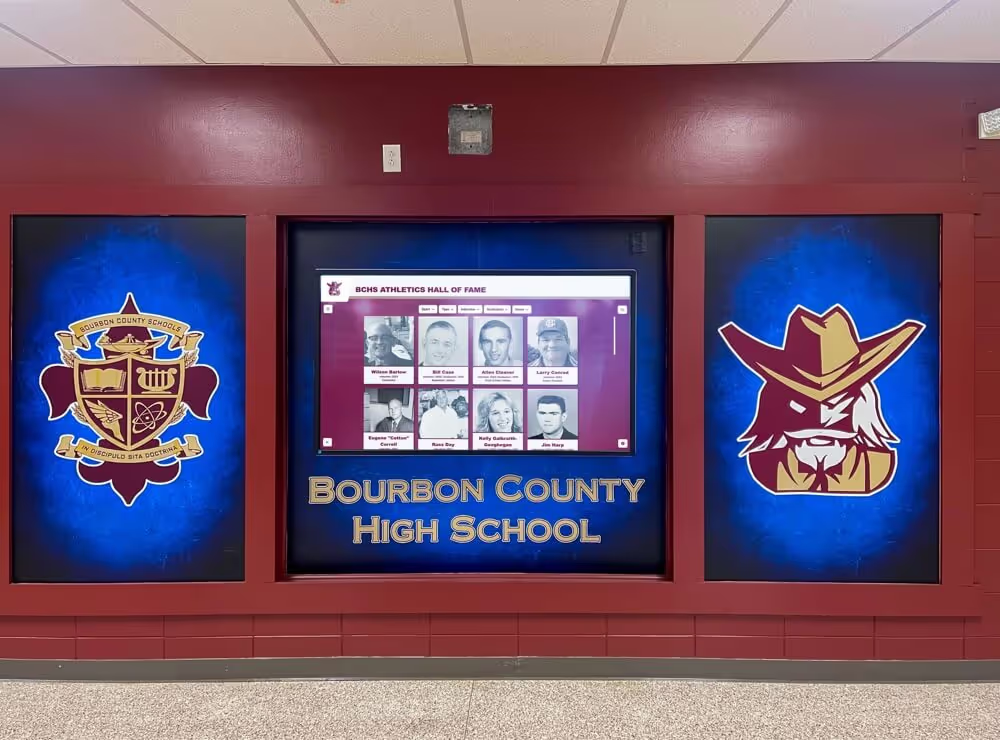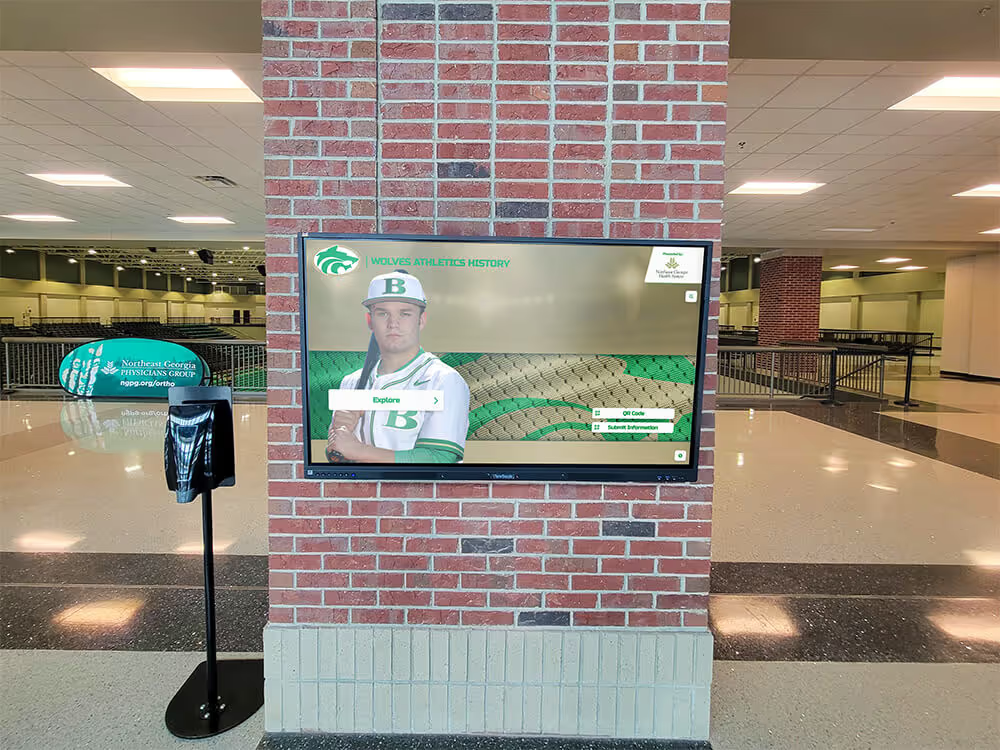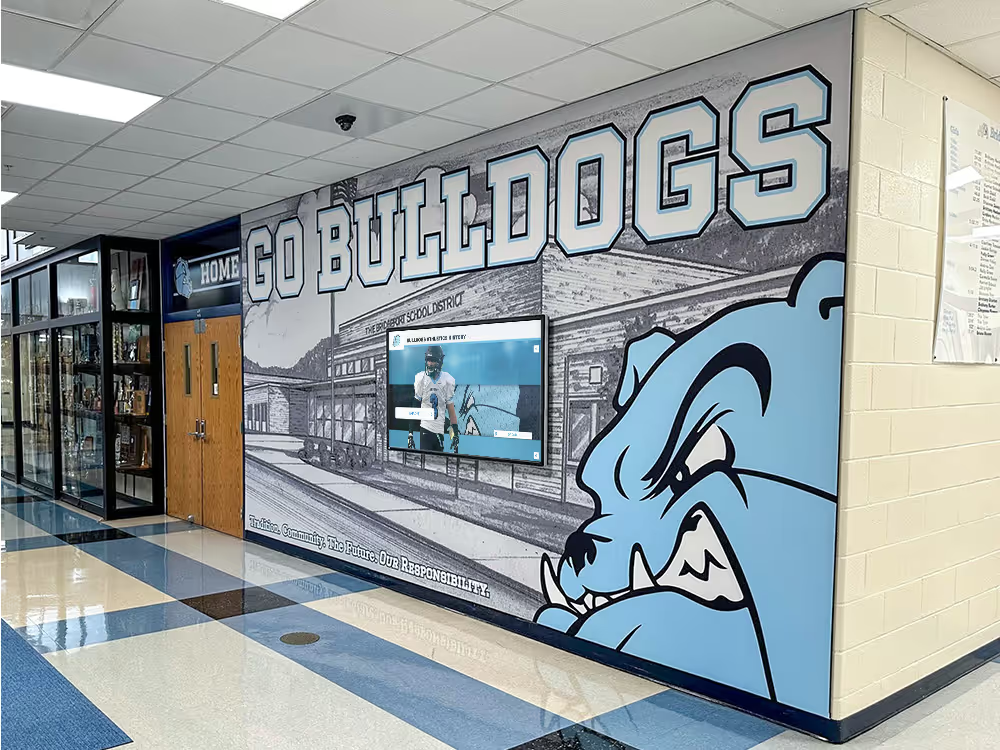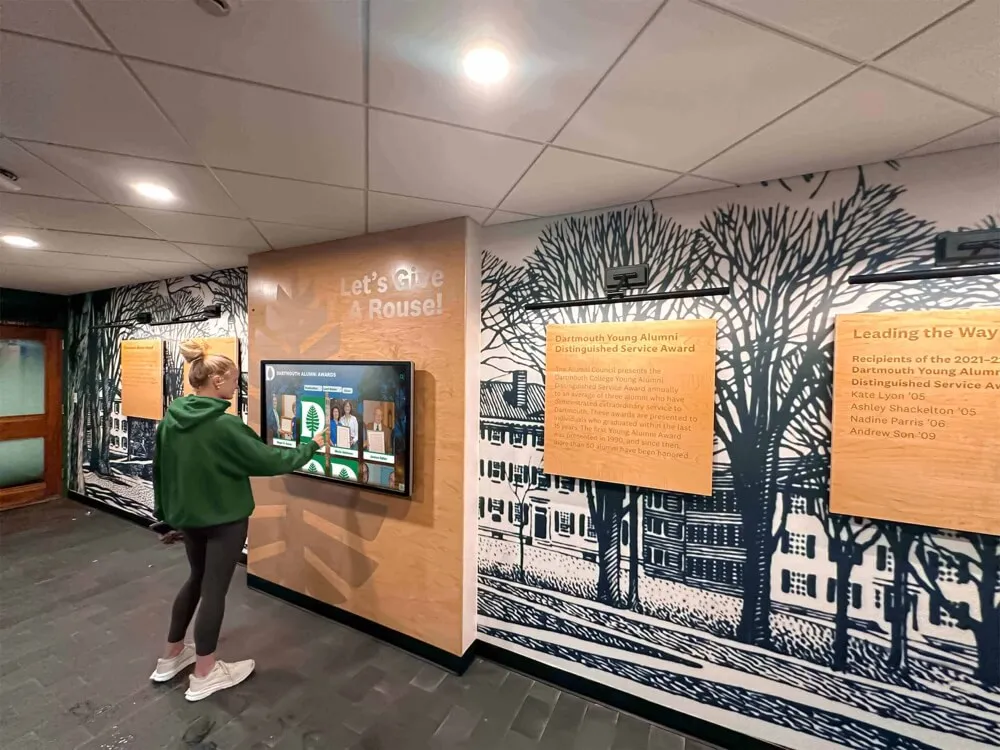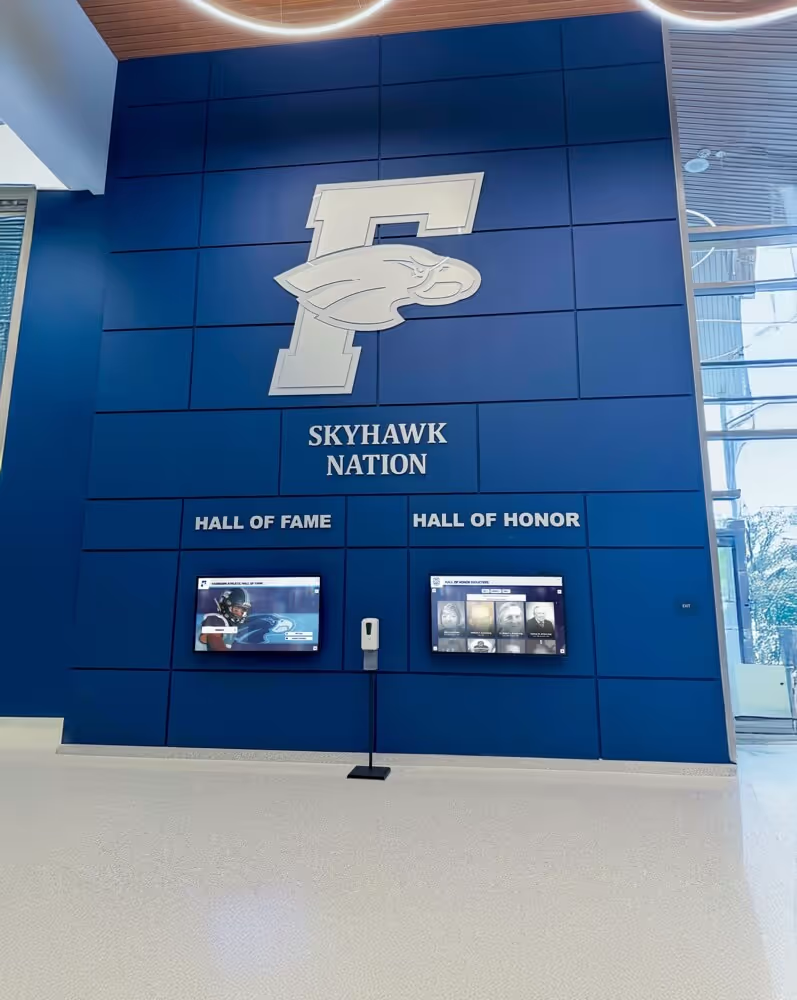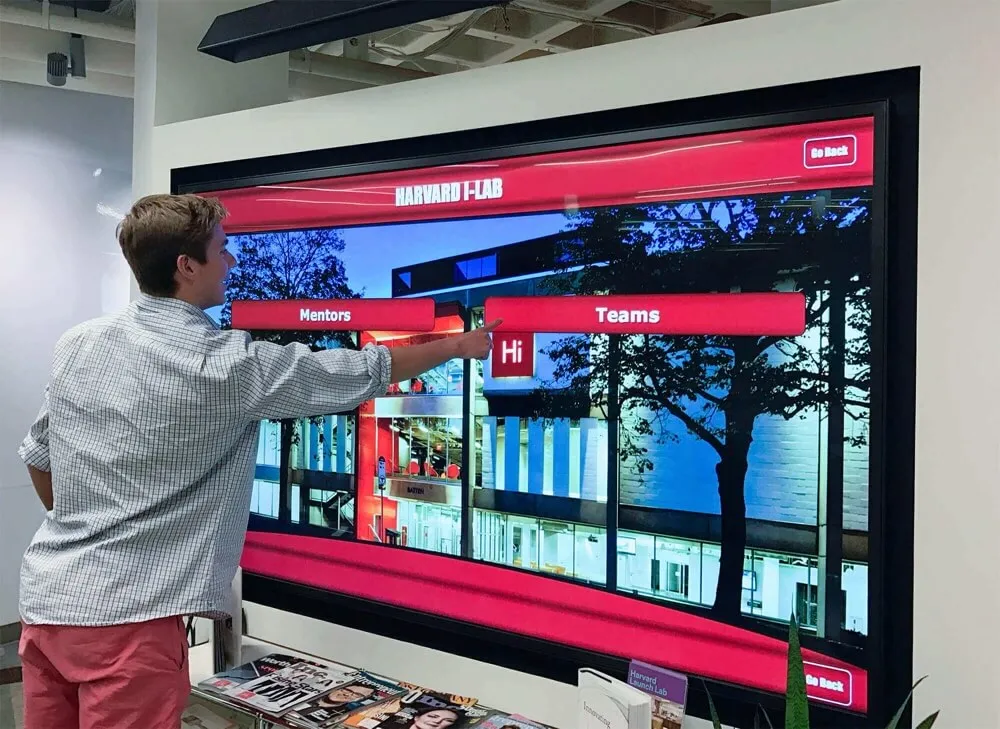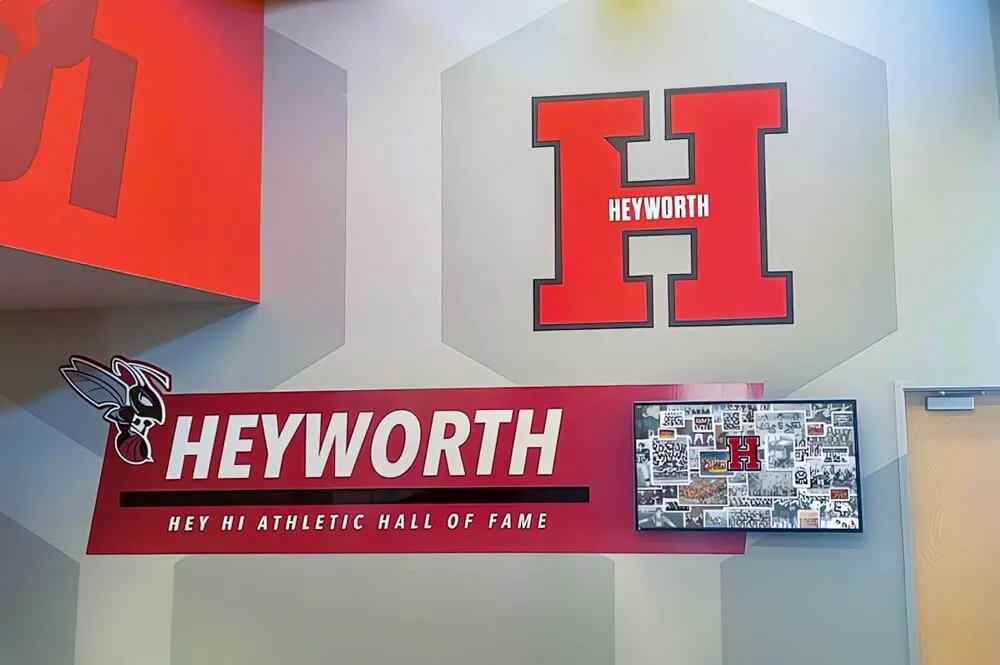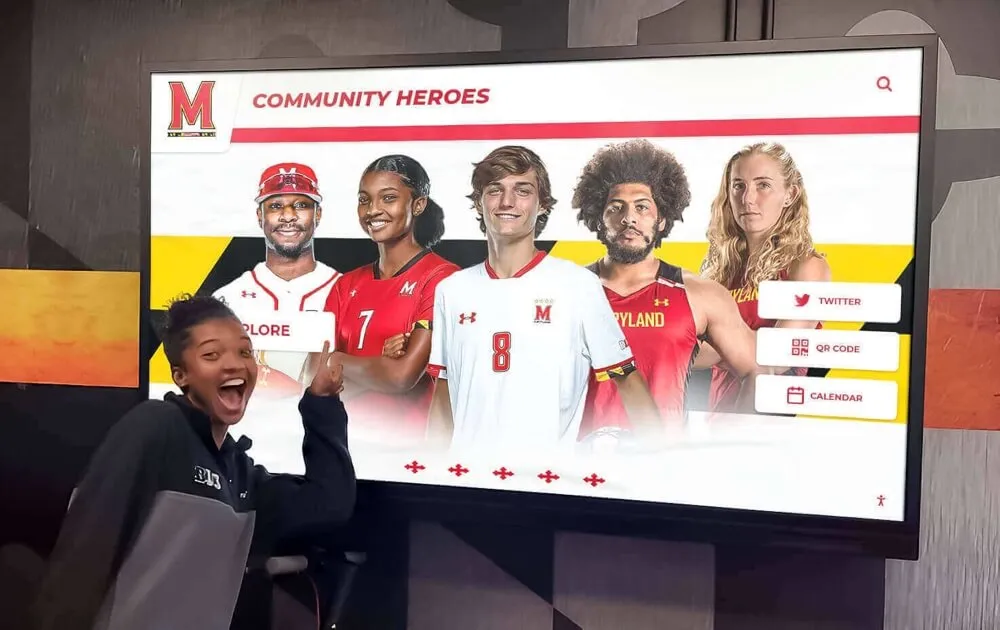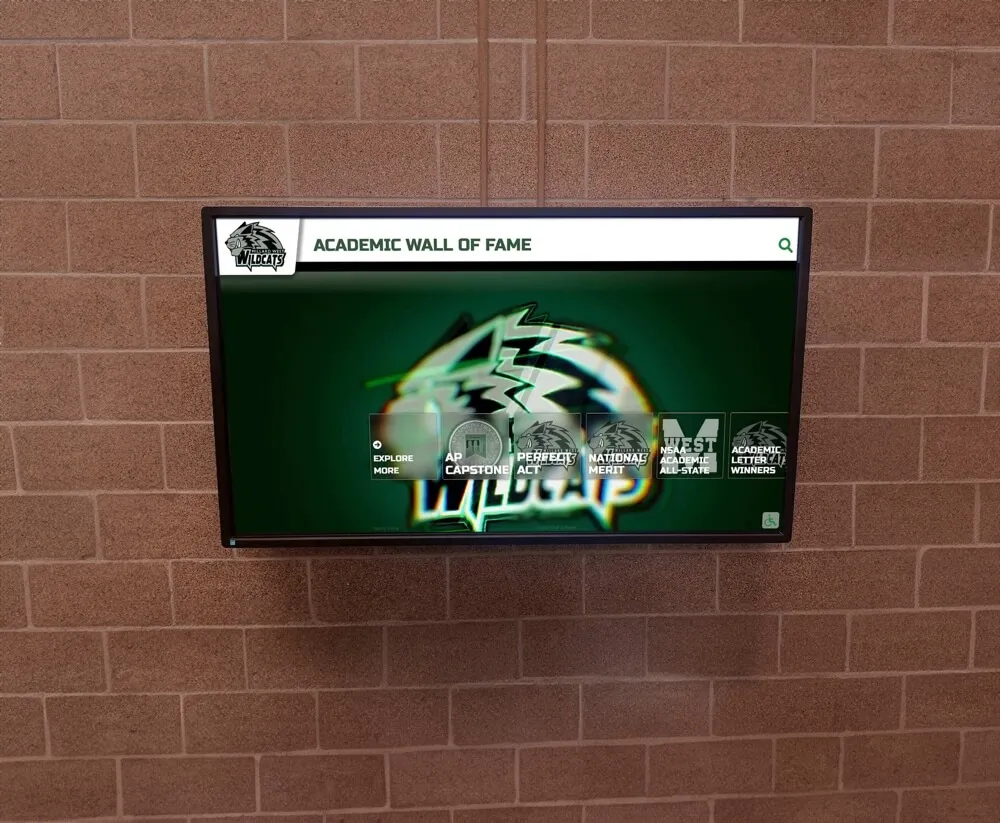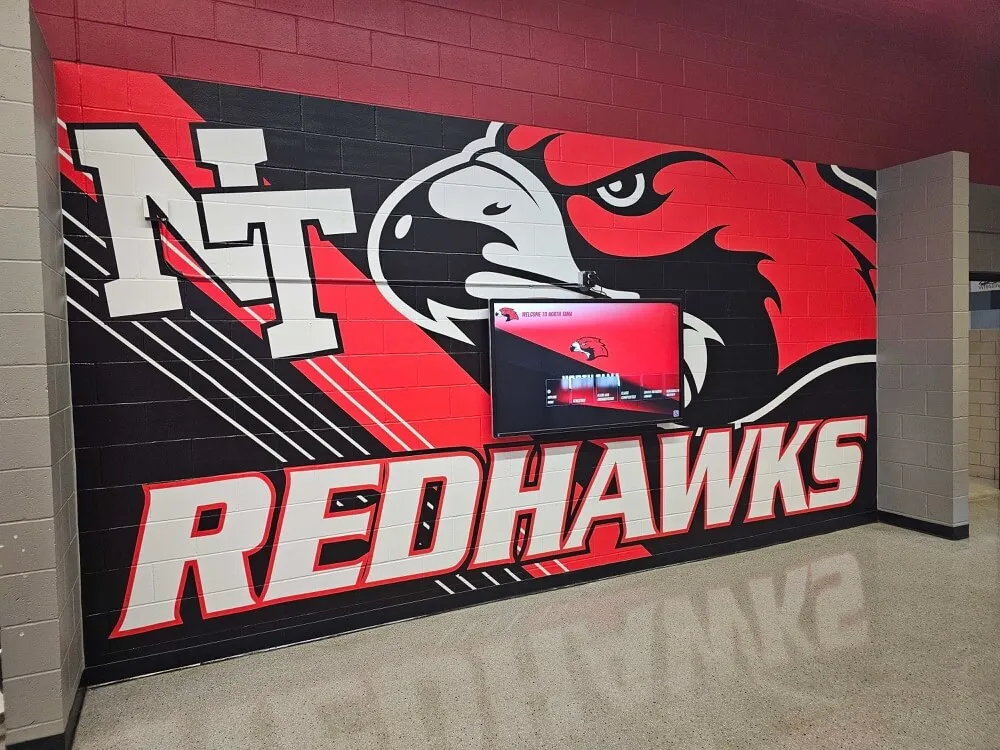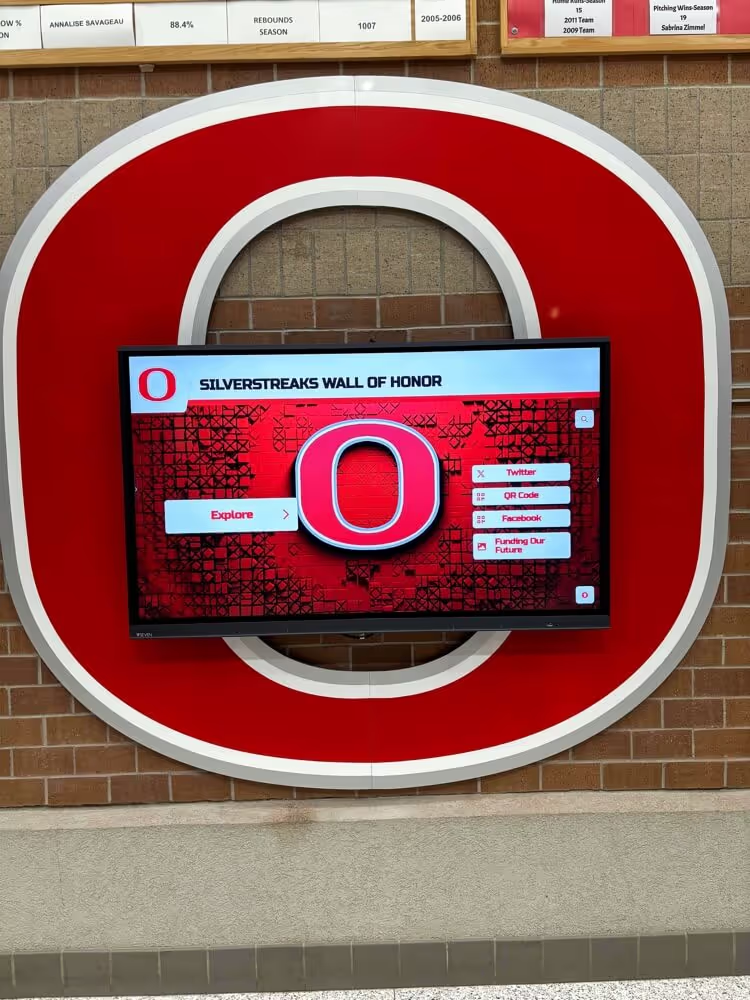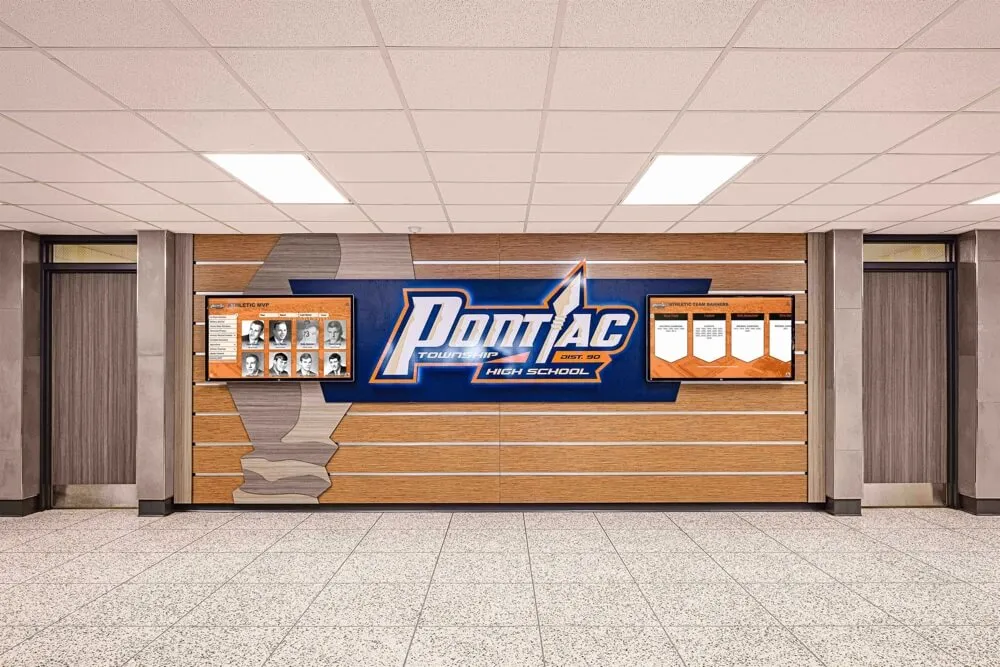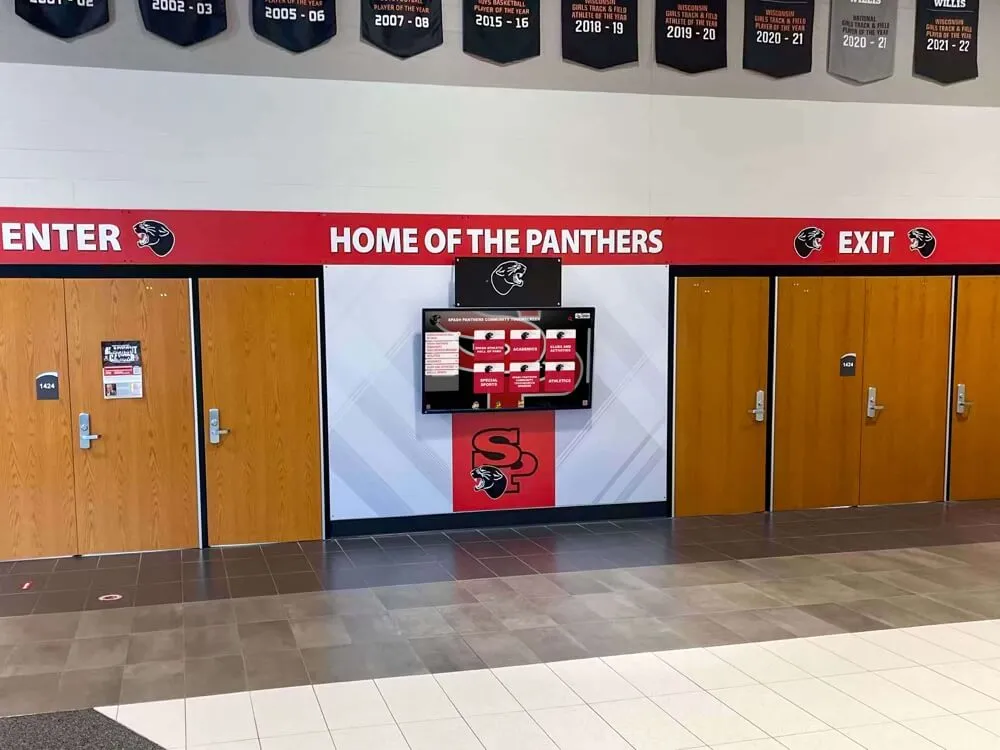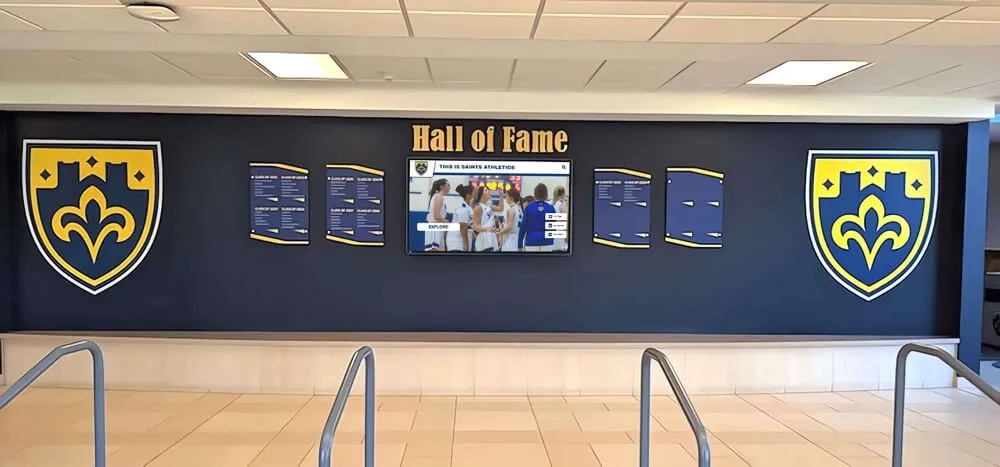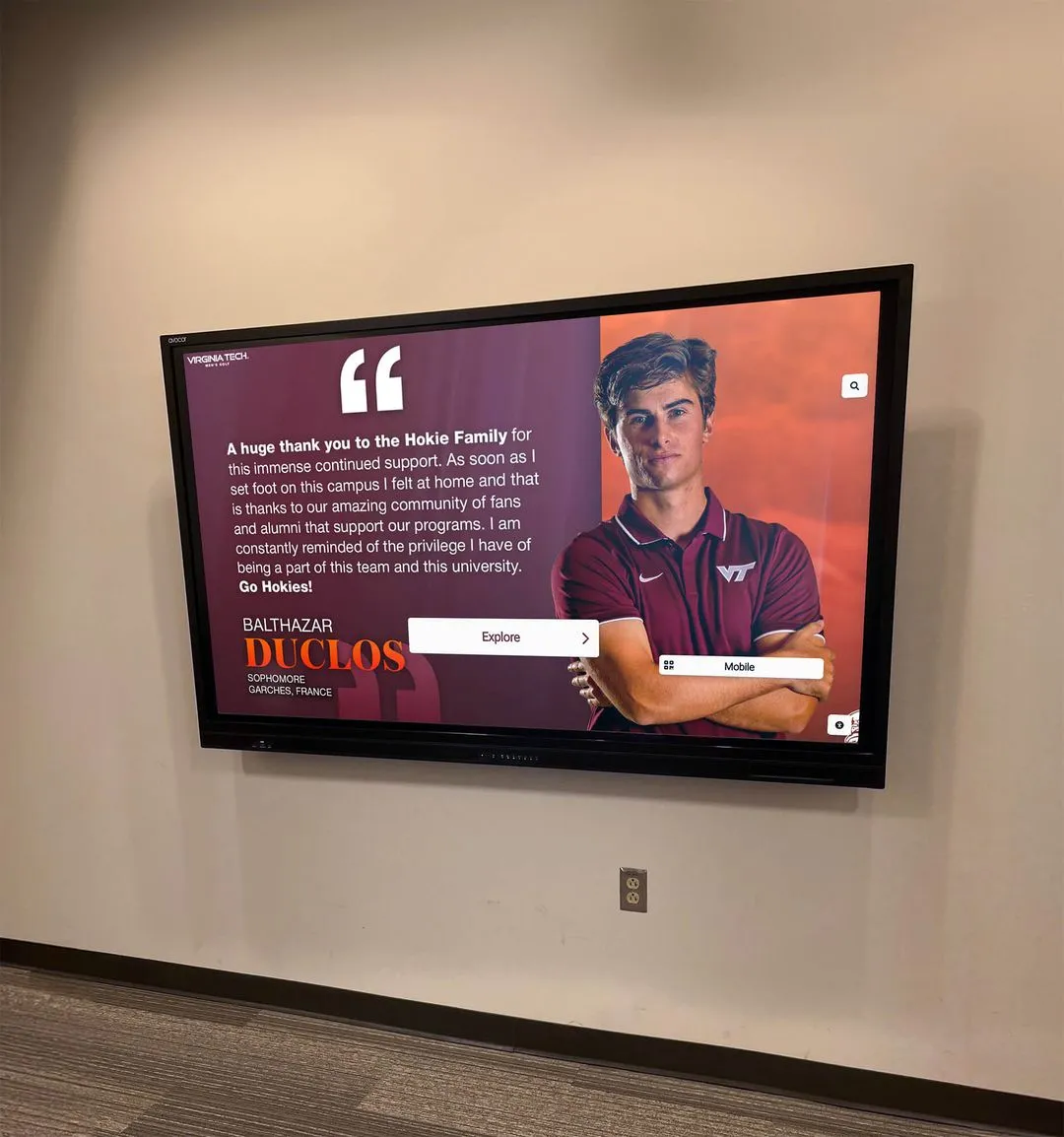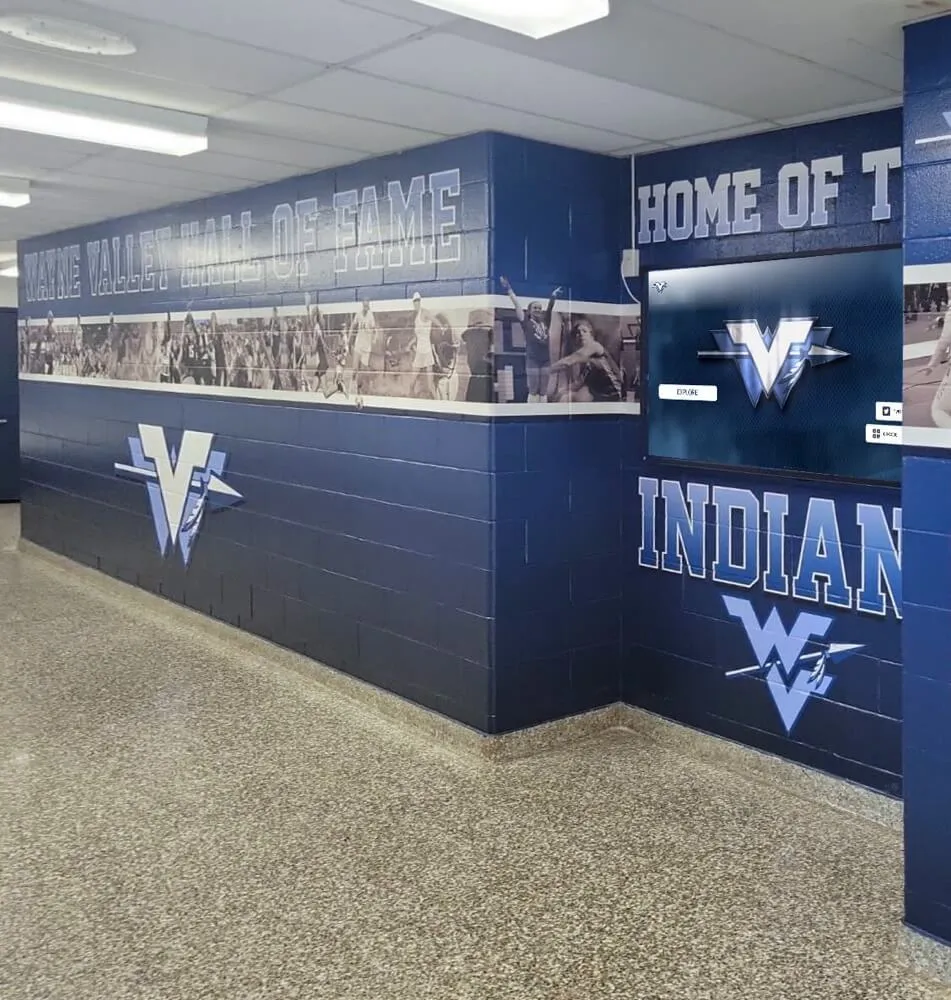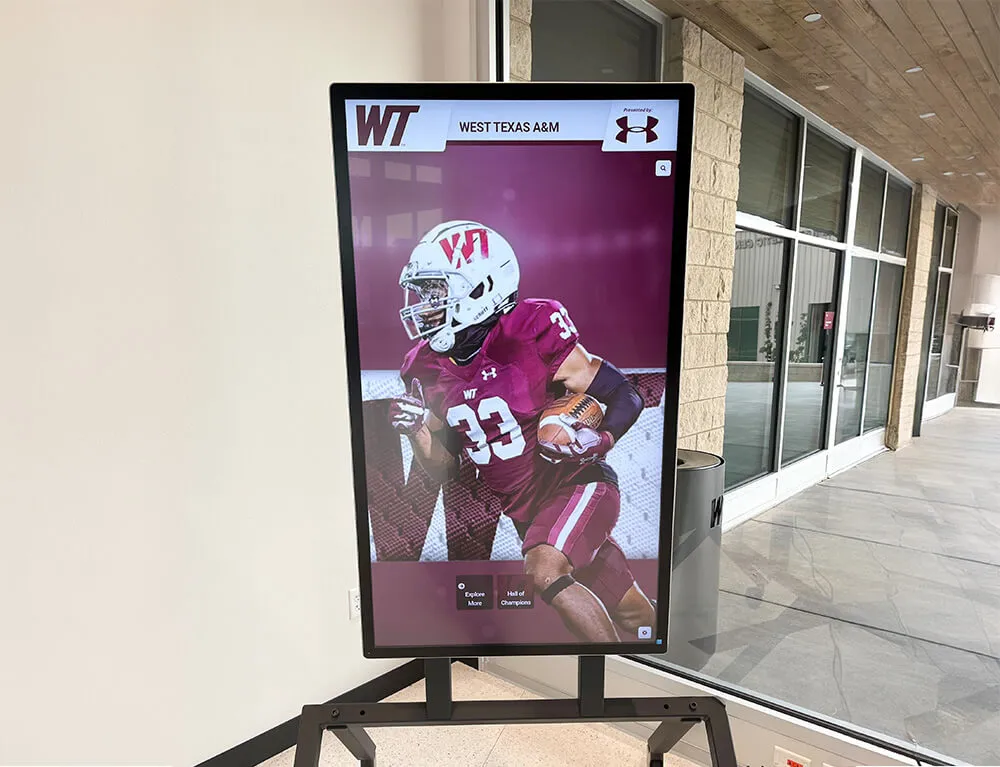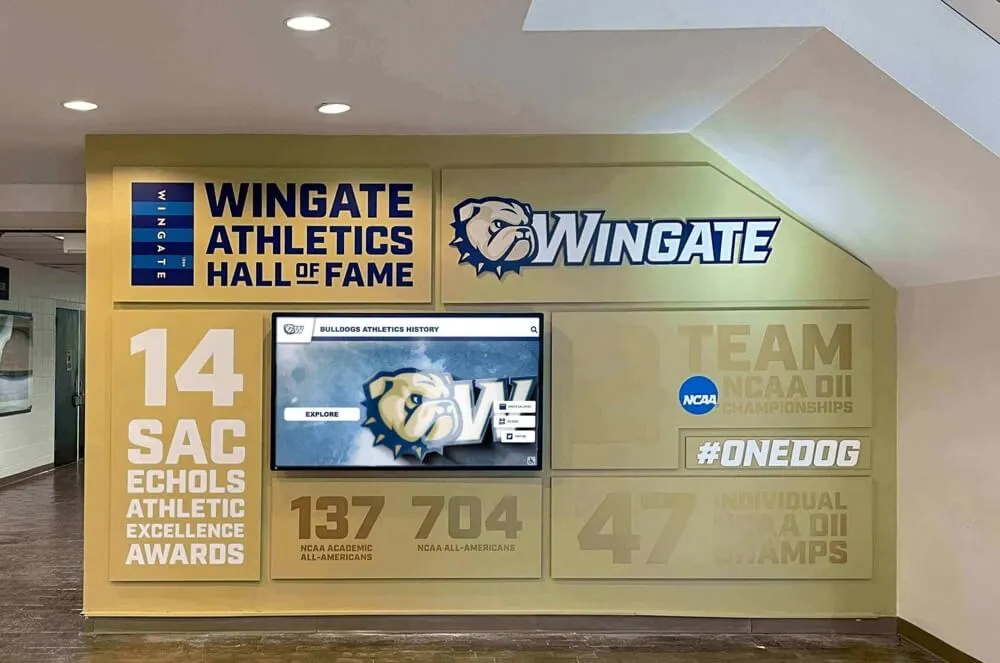The landscape of alumni recognition is undergoing a significant transformation. Traditional static displays with photos and plaques are giving way to dynamic, interactive digital solutions that engage visitors and celebrate achievements in unprecedented ways. Rocket Alumni Solutions is at the forefront of this revolution with cutting-edge digital Wall of Fame displays that are changing how institutions connect with their communities.
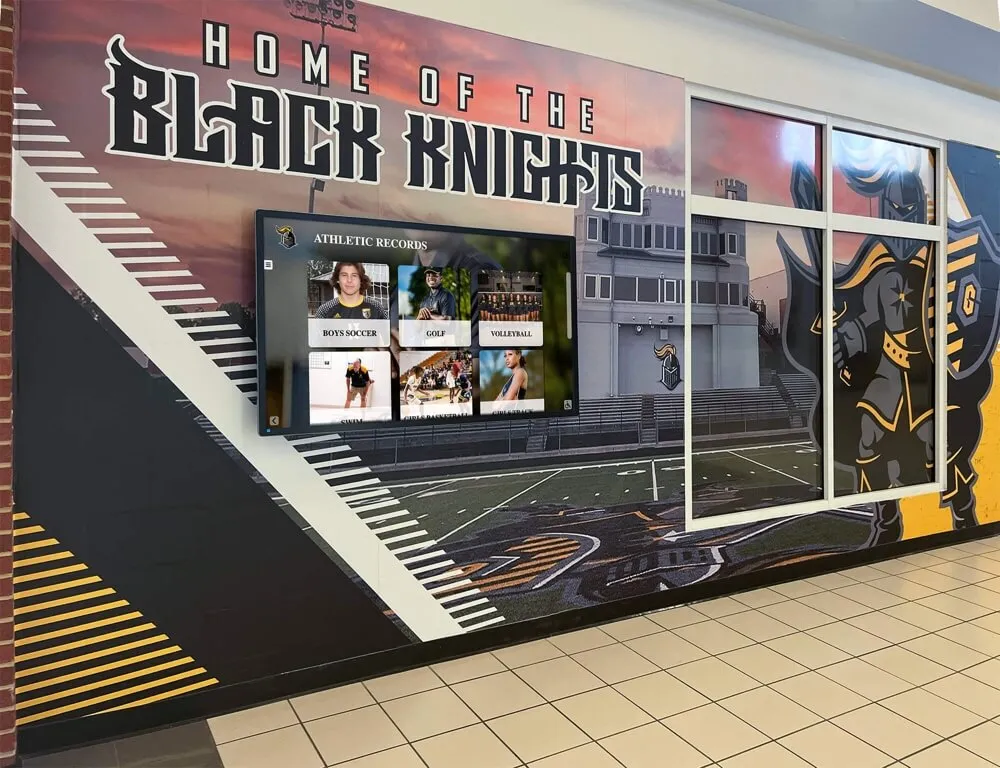
A state-of-the-art digital Wall of Fame installation at Central Gwinnett High School
The Evolution of Recognition Displays
Alumni recognition has evolved through several distinct phases:
- Traditional Era (Pre-2000s): Physical trophy cases, framed photos, and engraved plaques dominated recognition displays.
- Early Digital Era (2000-2015): Basic digital slideshows and simple touchscreens began appearing in institutions.
- Interactive Era (2015-Present): Advanced touch displays with comprehensive databases and multimedia content.
- Next Generation (Emerging): AI-enhanced displays with predictive content and personalized interactions as outlined in our research on future trends in digital recognition.
Key Features Driving the Revolution
Today’s interactive digital displays offer capabilities that completely transform the alumni recognition experience:
Multi-Touch Interaction
Modern displays support multiple simultaneous users, allowing groups to explore content together—perfect for reunion events when alumni gather to reminisce about their school days. This technology has been shown to significantly strengthen alumni bonds through shared experiences.
- Collaborative browsing experience for multiple visitors simultaneously
- Intuitive gesture controls similar to smartphone interaction
- Responsive and fluid navigation through large content archives
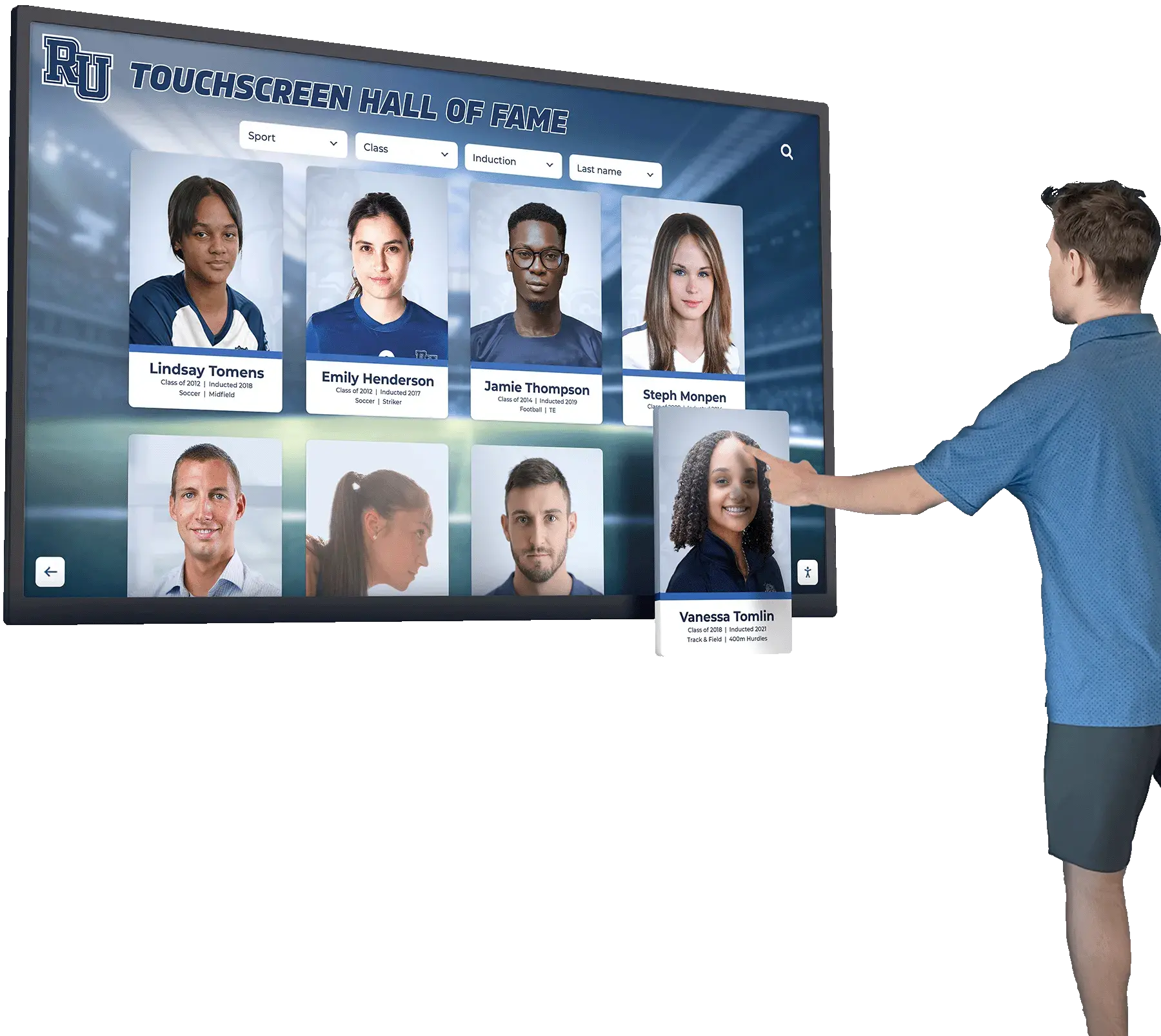
Rich Media Integration
Beyond static photos, today’s systems incorporate:
- High-definition video testimonials from notable alumni
- Audio recordings of significant moments in institutional history
- 3D models of trophies and achievements for interactive exploration
- Interactive timelines spanning decades of accomplishments
This rich media approach is central to effective content strategies for digital recognition, allowing for more engaging and memorable presentations.
Data-Driven Personalization
Smart displays can now:
- Recognize returning visitors (with opt-in features)
- Suggest content based on interest patterns
- Highlight connections between current viewers and displayed alumni
- Adapt content based on time of day or scheduled events
These features support inclusive digital recognition programs by ensuring all visitors find content relevant to their interests and backgrounds.
Case Study: Central High School Implementation
After implementing a Rocket Alumni Solutions digital Wall of Fame, Central High School reported significant engagement improvements. For a detailed guide on implementing similar systems, see our implementation guide.
“Visitor engagement with our alumni display increased by 347% in the first month. Students now regularly interact with our history, and alumni donations have increased 23% year-over-year since installation.”
— Dr. Sarah Johnson, Alumni Relations Director, Central High School
The installation includes a 75" multi-touch display in the main entrance and integration with the school’s existing alumni database, creating a seamless system that’s updated automatically when new achievements are recorded.

Measuring Impact Through Analytics
Unlike traditional displays, digital Walls of Fame provide valuable feedback on engagement:
- Most viewed alumni profiles
- Peak interaction times
- Popular search terms
- Content that drives the longest engagement
- Social media sharing metrics
These insights allow schools to continuously optimize their recognition programs based on actual user interaction. The resulting data can help quantify the ROI of digital alumni recognition systems.
Looking Forward: Emerging Technologies
The next wave of innovation in digital recognition displays includes:
- Augmented Reality Extensions: Using AR to expand the display experience to mobile devices
- Voice Recognition: Enabling natural conversations about alumni achievements
- Real-time Social Media Integration: Displaying current achievements of alumni as they happen
- AI-Generated Storytelling: Creating dynamic narratives that connect different alumni across generations
These technologies are helping create more accessible recognition experiences for all visitors, regardless of ability.

Augmented reality extension of a Wall of Fame display

AI-driven content creation enhances storytelling capabilities
Implementation Considerations
Schools considering a digital Wall of Fame should evaluate:
- Traffic patterns and optimal placement: Identifying high-visibility, accessible locations
- Content management workflows: Establishing efficient processes for updates
- Data integration with existing systems: Connecting with alumni databases and student information
- Display durability and longevity: Selecting commercial-grade hardware built to last
- Future expansion capabilities: Planning for growth and technology evolution
Our technical considerations guide provides in-depth information on hardware and software selection for these systems.
Conclusion
Interactive digital displays represent not just a technological upgrade but a fundamental rethinking of how institutions honor their alumni and inspire current students. By creating engaging, dynamic experiences that connect past achievements with present students, schools create a living legacy that strengthens community bonds and institutional pride. These displays also have a profound impact on current students by providing visible role models and achievement pathways.
Ready to transform your alumni recognition program? Contact Rocket Alumni Solutions to discover how our interactive digital Wall of Fame can bring your institution’s legacy to life through powerful institutional storytelling.





